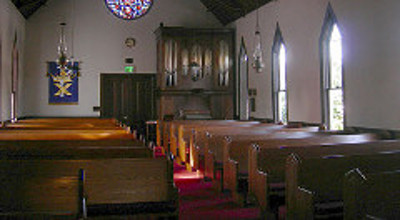I like reading about trends and I like thinking about a long list of church trends.
This year, I want to do something different by focusing on one important church trend. By calling it the most important trend, I want to state up front that I am not building my case with stats. What I do have is 14 years of weekly meetings with church leaders across the country talking about what’s happening in the church.
Specifically, in the last 2 years, I have see one common thread become a common rope. Its presence is now ubiquitous; every church I talk with mentions this problem when we discuss the Local Predicament in our Kingdom Concept work (challenges and opportunities expressed in the local culture). I have never seen a problem discussed this commonly amid a diversity of church sizes and denominational affiliations.
What is this one trend? It’s that your most committed people will attend worship services less frequently than ever in 2015.
What does this mean? Simply that people who use to attend 4 times a month may only attend 3 times a month. Members who used to come twice a month will only come once a month.
I could build a case with statistics, but I don’t want to lay the focus there.
There are some stats that validate the slow continual decline of church attendance. But this doesn’t get at what I am seeing, mainly because it’s diluted by a mass on non-evangelical data and halo-effect responses (people answering more positively than reality would suggest).
In addition, Auxano has done hundreds of primary research congregational surveys that reference worship frequency data decline that would support my observation. However, to date, I have not aggregated and studied the data. If you want more information on this, you can read my post on the “20 Most Important Measurables” of a church.
Finally, in 2013, Thom Rainer stated that decreasing frequency of church attendance is the No. 1 reason for church decline.
The bottom line is that the data don’t reveal the significance of the increasing reality among the committed members of evangelical churches and the massive opportunity this presents for us as leaders.
But what is causing this trend?There are several reasons why people attend church less frequently. The first and most obvious place to go (and the only place Thom Rainer goes) is waning commitment. People attend less when spiritual priorities are less important. But let’s consider some reasons:
- Increasing involvement with kids’ activities including more “multiple activity” commitments (sports, music, etc.) for longer duration with greater competitiveness. The growth of club sports and the intensity of competition creates a market for kids to get started earlier and be involved longer. This is literally eating our families alive when it comes to time.
- Greater mobility in general and the rise of virtual work places. Twenty-five percent of white-collar Americans travel as a part of making a living. People with discretionary time are more likely to be traveling or working in environments outside of their typical home environment.
- Access to church online. Now it’s is easier to stay connected to the church, if you have to travel or if you have problems at home getting ready for church in the morning. Within two minutes, I can be streaming one of many great services from across the country from my laptop to my widescreen via Apple TV for the entire family.
What should we do about this trend?
Again, the knee-jerk response is to lament the decreasing commitment. But remember people are always committed. How do we help people become all God wants them to be given these cultural limitations? Or, dare I say, cultural opportunities?
1. Add value not venues. Rather than just creating more things for people to do “at church,” how can you add more value to people through fewer venues or environments? For example, rather than starting a class on prayer, how can you adapt the material for the class and provide it in existing small groups Or, how can you provide that content online rather than requiring someone to drive to church?
2. Think training over teaching. If you attend an effective online service, it is actually more intimate than an average megachurch worship experience. Chat rooms, follow-up and engagement take place with great ease. My point is that intimate community doesn’t take place in many worship environments.
The more that worship at your church is about teaching and inspiration only, the more people will be able to substitute your church offering with digital ones. The best to approach to address this is to think like a trainer not a teacher. Teaching is ubiquitous and free. Training is not. What does that look like? Instead of just preaching on prayer, give them actual tools and ways to practice. Give them backdoor links on your website with additional training. Hand them a book and create a daily devotional to follow on Twitter or Facebook.
3. Design for ministry ends not means. Most churches are already over-programmed and under-discipled. Perhaps this “negative” trend is a positive way to awake from the myth that more activity at church means greater spiritual vitality. It does not. Use the challenge to rediscover the difference between ministry ends and ministry means. Start by articulating the kind of disciple that your church is trying to produce.
The idea was never to get people to come to church a lot, but to follow Jesus better. And, you don’t need a lot of church activity to be a follower of Jesus. Think about it: Is Jesus going to give you a scorecard in heaven asking you how many times people came to your worship services, Bible studies and service projects? Or, is He going to wonder what kinds of thinking, being and doing those things produced in the lives of our congregation?
Will Mancini emerged from the trenches of local church leadership to found Auxano, a first-of-kind consulting ministry that focuses on vision clarity. As a “clarity evangelist,” Will has served as vision architect for hundreds of churches across the country, including the leading churches within Baptist, Methodist, Presbyterian, Lutheran and nondenominational settings. His pastoral experience includes helping lead two different congregations to over 3,000 in weekend attendance in 10 years—Clear Creek Community Church and FaithBridge UMC.
For the original article, visit pastors.com.
See an error in this article?
To contact us or to submit an article






















